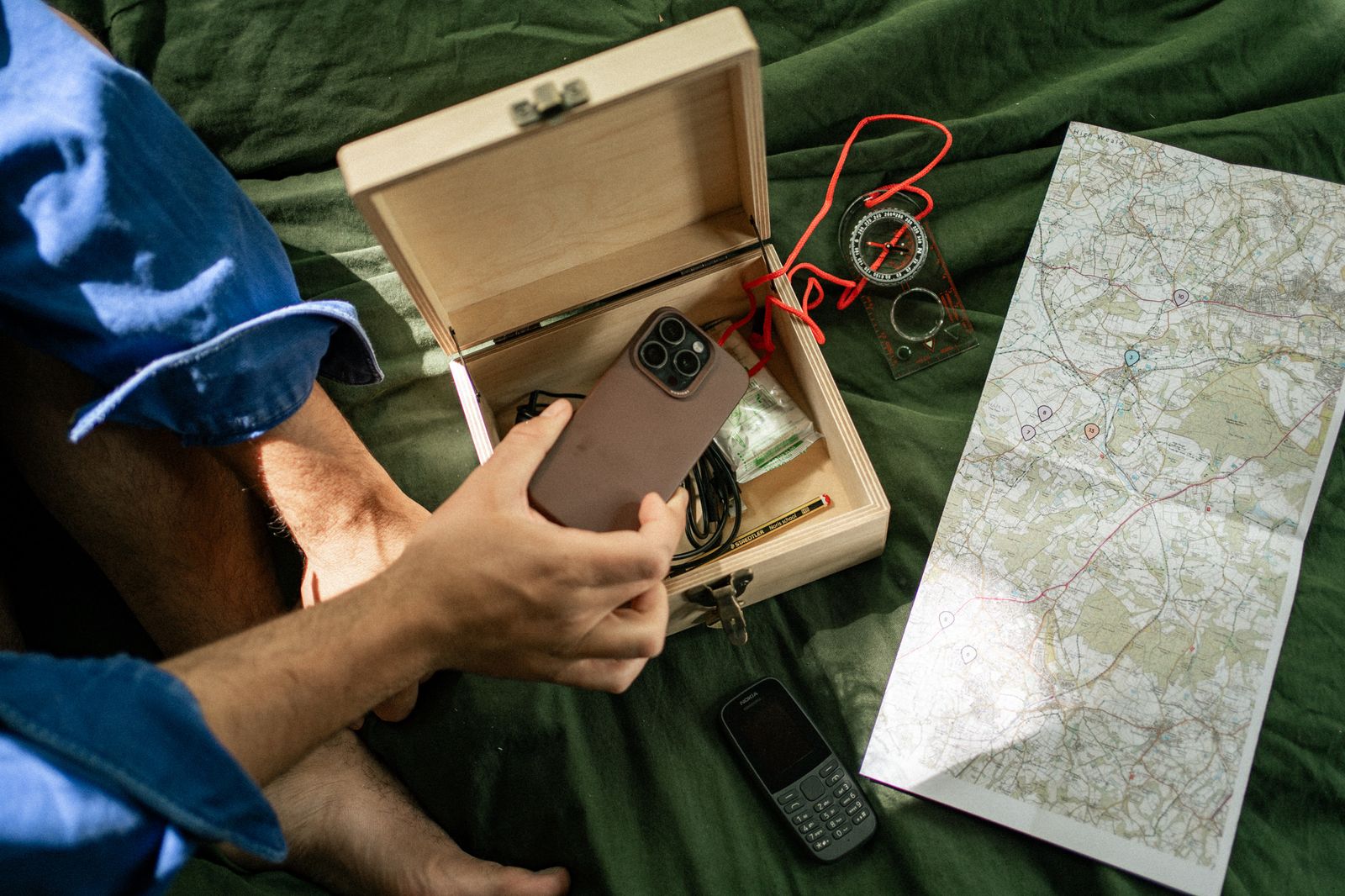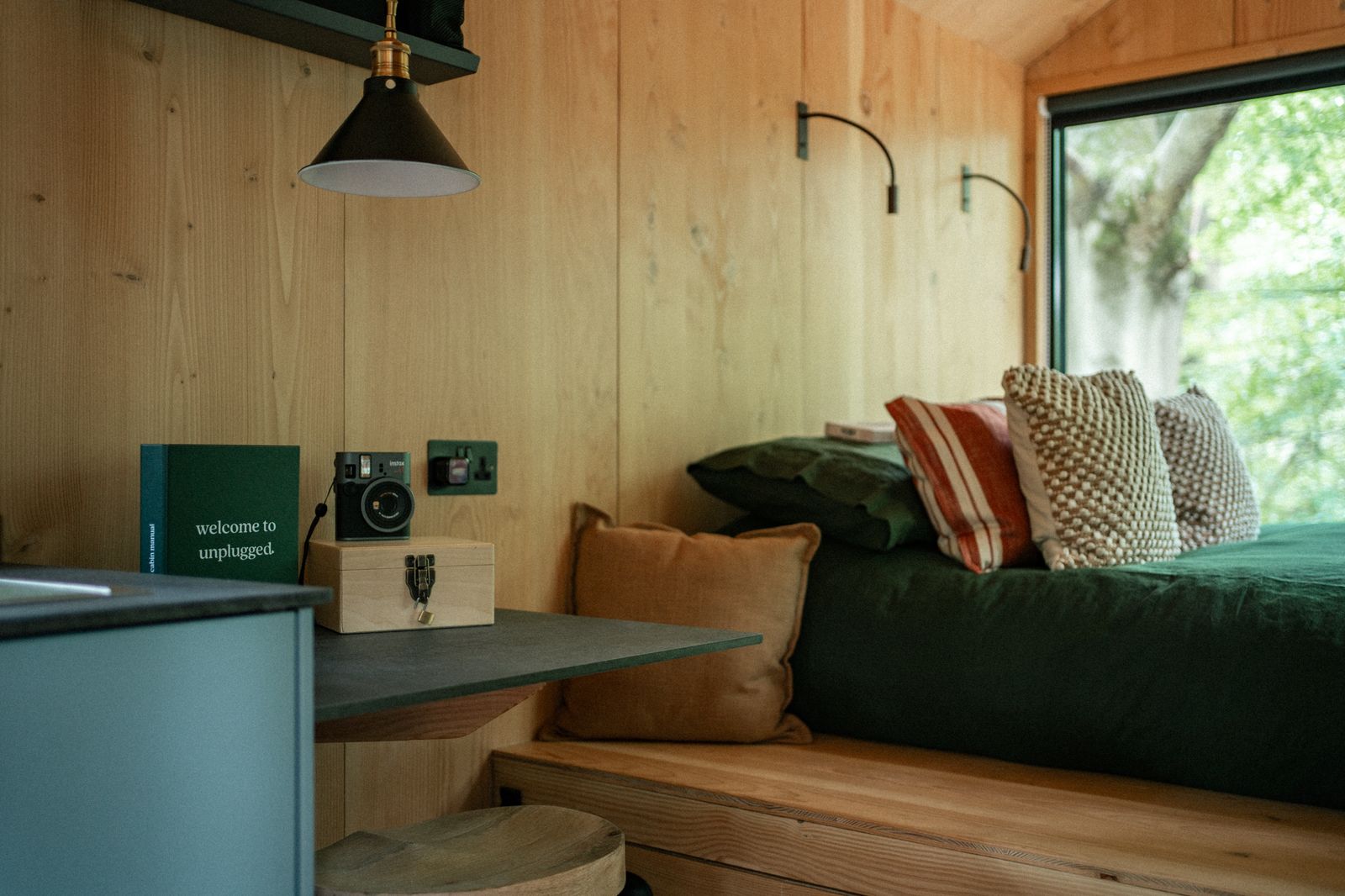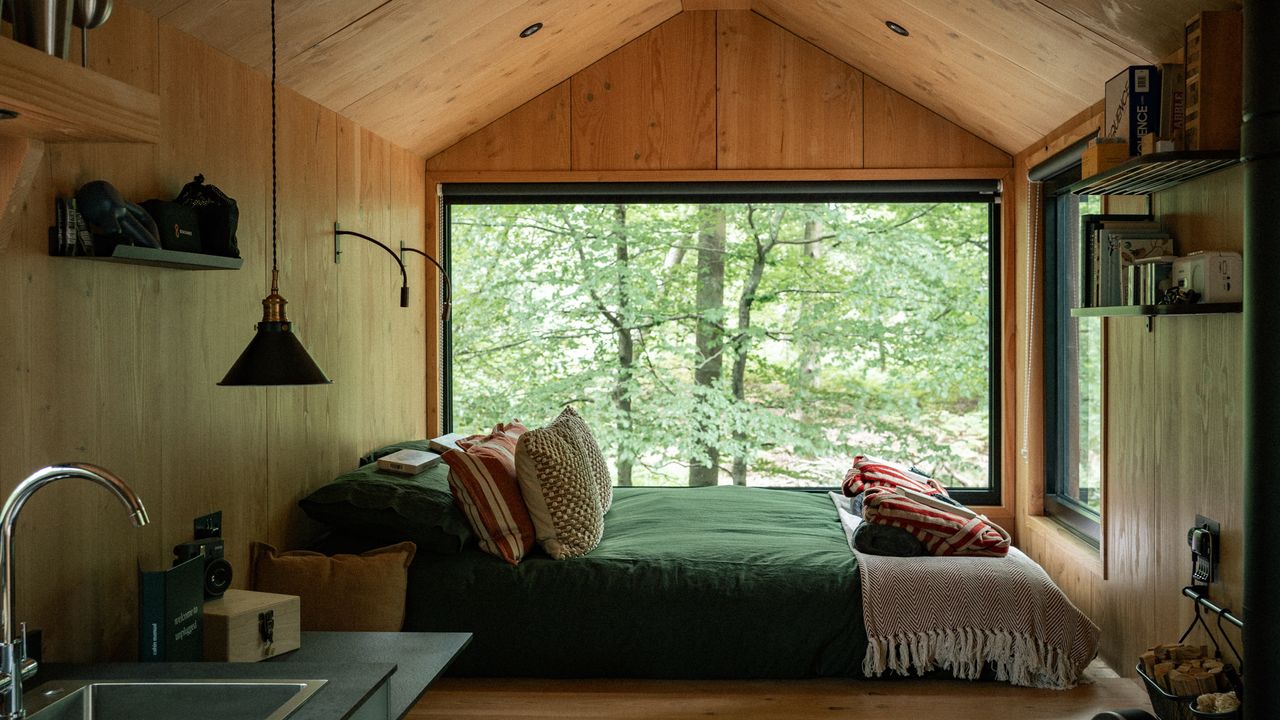Designing for calm is not as simple as dropping a cabin in a remote location and cutting the Wi-Fi. “We design everything around the idea that calm is a luxury, from the moment you lock away your phone, the cabin takes over and guides you into a different rhythm,” says Hector Hughes, co-founder of Unplugged, a UK-based startup that launched in 2020 with a handful of three-night digital detox cabin retreats. By 2024, it had more than 30 cabins within a two-hour drive of major cities such as London and Manchester, with further locations in Spain and a target of 60 cabins by the end of 2025.
The success of these spaces lies in the precision of their interiors: proportions that soothe rather than overwhelm, materials that invite touch, and layouts that gently choreograph analogue behaviours. It is a form of environmental psychology at work, creating rooms that quieten the body and mind not through absence, but through carefully chosen presence.

Philip Scott Photography

Philip Scott Photography
“Our interiors are wood-panelled and we focus the whole design around a giant picture window so guests feel surrounded by nature from every angle,” Hughes tells us. Linen bedding, under-bed storage and a phone lockbox encourage guests to drop their devices. Shelf displays of books, radios and board games prompt analogue activities, and dimmable lamps replace harsh overhead lighting. Here, ping minimalism is less about austerity and more about redirecting attention: toward a picture window instead of a screen, the sound of a turntable instead of a notification, a technique that is being adopted in hospitality spaces around the world in a myriad of ways.
.jpg)
Photo courtesy Six Sense Vana India
